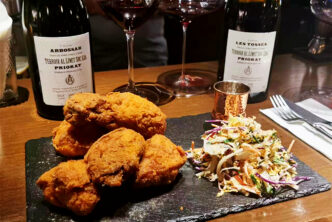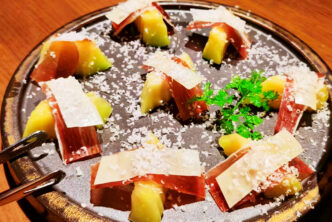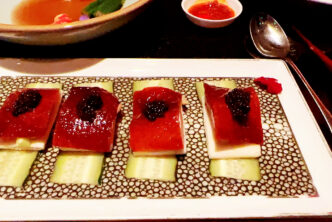Trimani Wine Bar
Via Cernaia, 37b
00185 Roma
Italy
Tel. +39 06 4469630
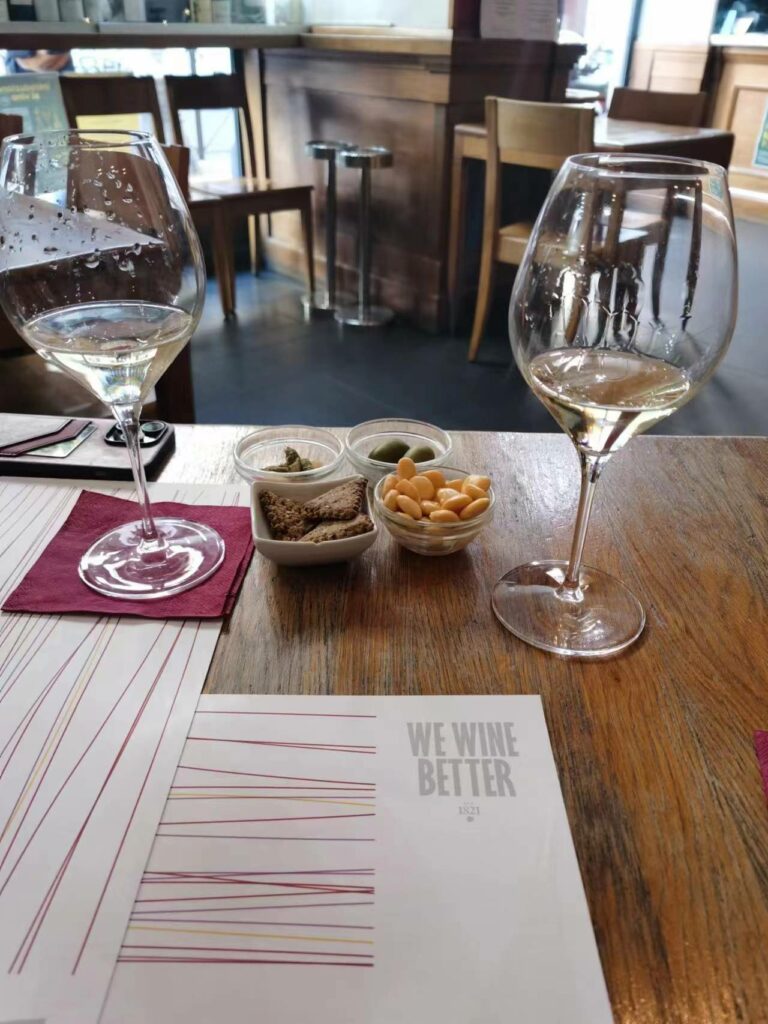
The dishes
Grilled bread with rosemary-accented lard and buffalo mozzarella (crostino con lardo al rosmarino e mozzarella di bufala)
Oysters (Ostriche)
Smoked trout from Friuli with orange mayonnaise (trota affumicata dal Friuli con maionese all’arancia)
Grass pea soup (zuppa di cicerchie)
Spaghetti with small clams (Spaghetti alle vongole)
Salt cod with caramelized onions (baccalà con salsa di ceci e cipolle caramellate)
Steak tartare of Piedmontese beef (tartare di manzo piemontese)
Slow-cooked braised meat in red wine (brasato di manzo al vino rosso)
Apple cake with lemon curd (tortino alle mele con lemon curd)
I last wrote about Rome’s Trimani Wine bar when I was still Senior Editor at Vinous, but that was way back in November 2016, so it was high time for a new visit and review. Closed Mondays, but otherwise open for lunch and dinner six days a week, the Trimani Wine bar is, when in Rome, a can’t miss stop for all those who like good wine and food. The wine list is one of the ten best in the city (one in which wines are on offer at exceptionally fair prices), and the food is authentically Roman at that. Honestly, it’s hard for sybarites to ask for much more.
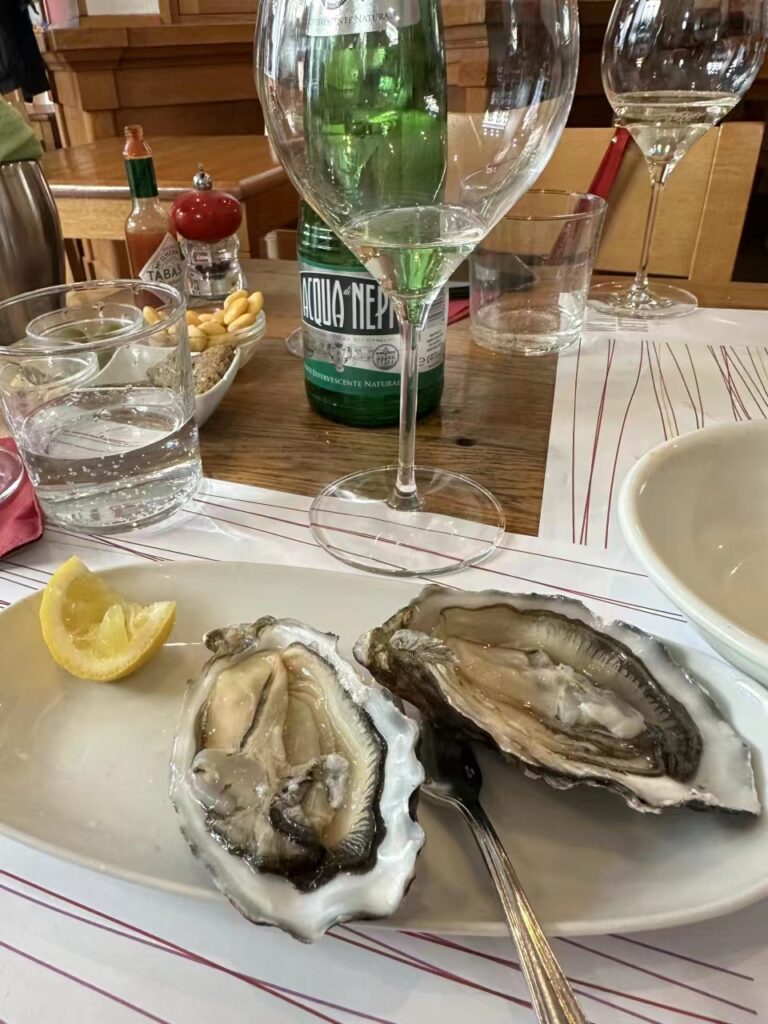
Trimani is one of the most important names in wine of Rome, characterized by the almost dangerous (in English, at least) motto of “we wine better” that you’ll find written just about everywhere. The family is one of the city’s first to be involved in wine sales, with a documented history going back hundreds of years, to 1821 at least; still today it runs, just around the corner from the Wine Bar, Rome’s oldest and most famous wine retail store, the Enoteca Trimani on via Goito (the family’s wine store has actually moved around a bit over the centuries: back in the 1800s they sold wine in via di Panico, then moved to via delle Carrozze, and then in what was one day to become via Piave prior to setting up shop in the current location just before World War I). The Trimani food and wine empire is currently run by three of the Trimani siblings (a fourth member of the family, eldest brother Giovanni, has designed the graphics of the establishments but is not directly involved in running the wine shops and bars): Francesco runs the Enoteca, brother Paolo oversees the Enoteca Buccone (another landmark Roman watering hole) in the historic city center previously managed only by cousins of theirs, and sister Carla is in charge of the Trimani Wine Bar that is the subject of this review.
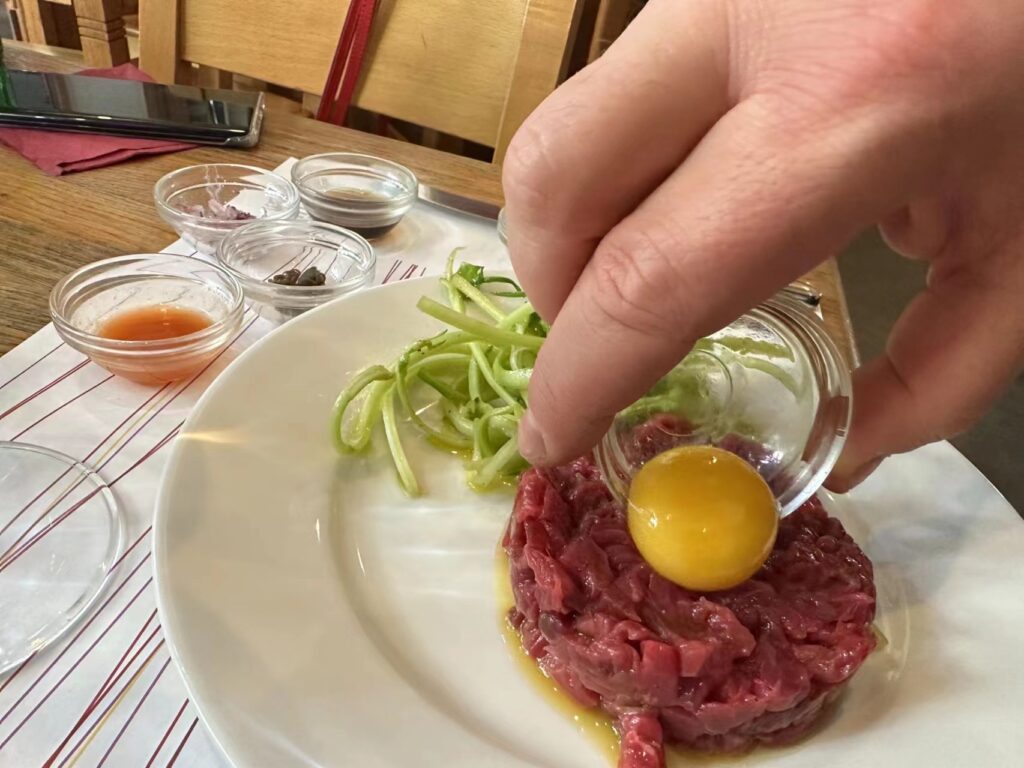
Founded in 1991, the Trimani Wine Bar was one of Rome’s very first modern-day wine bars; clearly, the Eternal City had always had its share of bottiglierie and fraschette where locals gathered and imbibed away, but “wine bars” as we think of them today where not at all common as recently as the 1970s. When I arrived in Rome in 1981 for university, Cavour 313, Enoteca Roffi Isabelli and Cul de Sac where really the only addresses functioning in terms of the wine bars of today; and so, there was plenty of room in which to set up one’s wine tent, so to speak. The heart and soul of the Trimani Wine Bar has not changed much since then: it has always been a somewhat spartan but comfortable spot, but after all, it’s not for trappings, bells and whistles people came and come here for. Over the years, the wine list has increased in size and choices, as has the food, but the core values and objectives have remained the same. Everything about the place exudes authenticity, knowledge and passion for the food and wine craft. Food ingredients are top rate and have always been specifically sourced from small quality purveyors (I remember the days when they were among the few, if not the only ones, to serve the excellent goose salumi from Palestro and the lard of Silvio Brarda), while the wine selection is one of rare depth and insight. The team in the dining room is friendly and generally skilled: finding trained restaurant personnel in Italy these days is becoming next to impossible, demand for these individuals is high, and so the staff turnover at the Wine Bar these years has been noteworthy. And so, no, you won’t recognize many faces, those who served you a decade or even just five years ago have moved on, but the newcomers are enthusiastic and passionate about what they do. The menu is short and synthetic, with about five to six appetizers, and the same number each of primi, secondi and desserts. The menu is clearly dependent on market availability and seasonality of produce, ranging from wholly Roman ingredients and preparations [such as amatriciana, vignarola, puntarelle (chikoree) and tripe, but also some more international offerings including steak tartare (one of Rome’s best), gazpacho (also one of Rome’s best) oysters and smoked fish]. The selection of cured meats and cheeses (not just Italian but also French and from other parts of the world too) is also a great way to sample one of the many wines offered by the glass (about twenty or so, from sparkling to white to red and sweet wines). A word to the wise: their mozzarella di bufala is not to be missed, especially if you are lucky enough to come by when it has just arrived. The wine list is divided up along the lines of descriptors such as for example “sparkling” (bubblies), “crystalline” (bubblies and white), “coloured” (reds), “sugary” and “noble rot” (sweets).
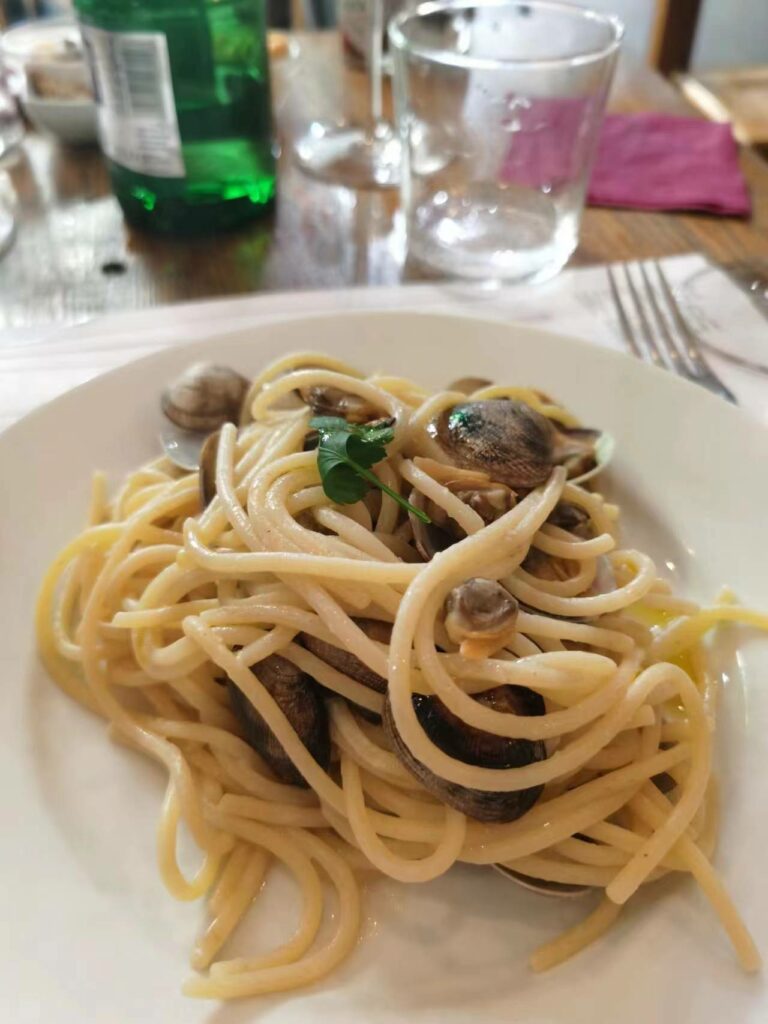
The food at Trimani Wine Bar as always is hearty and rock-solidly made. My favourite dishes on this day were the following. The crostino with their perfumed lard and excellent mozzarella di bufala is the best appetizer possible and really sets things off in the right direction: just make sure you don’t over do it with the yummy lupins they serve you while you wait for the food. The delicate yet very flavourful smoked trout matched perfectly with the two Sylvaners I chose to start the drinks race with, and the orange in the mayo further complemented the tropical and citrus fruit accents these two wines offer in spades. The grass pea soup is hearty and filling. I wonder: have you ever heard of grass peas, or cicerchie in Italian (the name derives from the Latin term cicerculum, or abbreviated, cicer)? One of the world’s most ancient legumes, well-known in ancient Rome and a dietary staple of legionaires and citizens alike that ate them in dozens of different ways (as a flour with which to make bread, in soups, in omeletes), a grass pea (Lathyrus sativus), also known as the chickling vetch (an admittedly horrible, unappetizing and hard to remember name), and the somewhat better sweet blue pea or Indian pea, can be thought of as a form of primitive chick pea with an earthier but much deeper, more complex taste. In Italy it is historically grown in central regions of the country, in Umbria mainly, but also northern Lazio, Tuscany, Marche and with sporadic plantings as far down south as Puglia, but is also common in Asia and eastern Africa (it does not require much water to grow and hence has always found a home in warm, droughty habitats). It is a remarkably healthy ingredient in any daily diet, rich in proteins and minerals (though because of its protein-rich nature and amino acid composition it should not be consumed exclusively as it once was), and devoid of fat and is classified as a prodotto agroalimentare tradizionale italiano (traditional Italian agroalimentary product or PAT). Today its mostly prepared in soups that feature an aromatic herb and vegetable base (celery, tomato, rosemary, depending on the recipe). Trimani’s version is outstanding, silky smooth and creamy: you’ll find yourself gobbling it down in no time. The tartare can come fully dressed, or if you prefer, as I do, prepare it yourself, with all the ingredients reaching your table in small glass bowls (red wine vinegar; anchovy oil; capers; onions; tabasco; celery; egg yolk; yellow mustard; olive oil) for you to have fun to dose and mix into your gloriously fresh meat. It’s simply delicious, and clearly, the quality of the meat goes a long way in making it a real home run.
The wines
Kofererhof 2019 Sylvaner R Valle Isarco Alto Adige 93
Kuenhof/Peter Pliger 2018 Sylvaner Valle Isarco Alto Adige 93
Bruna 2018 Pigato Le Russeghine Riviera Ligure di Ponente 91
Colacicchi Cesanese Tufano Lazio Rosso 92
Filetta di Lamole 2017 Chianti Classico 92
Albino Rocca 2020 Barbaresco 95
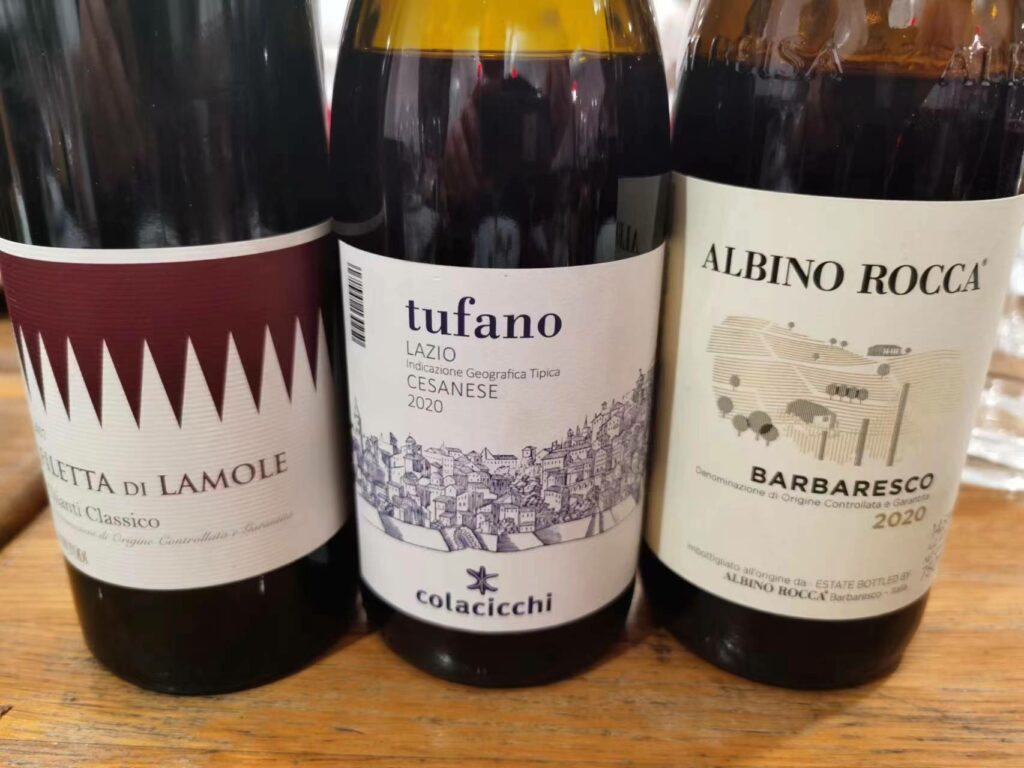
And when it comes to wine, you can’t help but hit anything but home runs at Trimani, which was exactly the case during my latest lunch there. When it comes to Sylvaner, Italy makes a bunch of great wines with this grape variety, and I had two of the best during this lunch. The Köfererhof 2019 Sylvaner R Valle Isarco Alto Adige is exceptional as always. And that should be the case, given the “R” in the wine’s name stands for “reserve”, meaning this is the wine made with the winery’s best Sylvaner grapes. The wine’s waxy nuances to the lemon, mineral and chamomile aromas and flavours make for a complex tipple that finishes long and savoury. Nicely textured but light on its feet, this was fine with the oysters but even better with the smoked trout and the spaghetti alle vongole. Its regional colleague, the just as excellent Kuen Hof/Peter Pliger 2018 Sylvaner Valle Isarco Alto Adige proved to be just as good at pairing nicely with the same foodstuffs that took a shining to the first wine, doing slightly better with those dishes that had a little sweetness to them, such as the orange mayonnaise accompanying the smoked trout. Pliger tends to late harvest his grapes and so there is often a hint of sweetness in his Sylvaner even when the wine is classically dry, as it was in this case. I could not pick a favourite between these two wines, they were both excellent. Riccardo and Francesca Bruna in Ranzo (Liguria) are arguably Italy’s best Pigato wine producers. Pigato is a biotype of Vermentino adapted to the western part (ponente) of Liguria (that part of Italy that segues into France), though many local producers are very, and I mean very, vocal about it being a distinct variety. Frankly I can see their point: the two grapes look very different and the wines have little in common, with Pigato wines recognizably bigger and more textured than the fresher, lighter-styled ones made with Vermentino. The Bruna 2018 Pigato Le Russeghine Riviera Ligure di Ponente is a lighter-bodied version than some previous vintages, but still showcases impeccable balance and length of fifty-plus years old vines, not to mention the telltale sneaky power derived from the area’s iron-rich red clay soils. Nicely savoury and citrus-accented, it stands up just as well to the oysters as it does to the spaghetti alle vongole. The perfumed, fresh Colacicchi Cesanese Tufano Lazio Rosso is perfect pairing for the tartare, where the fruitiness of the red wine provides a nice counterpoint to the saltiness of the beef preparation. Texture-wise, the two couldn’t be more evenly matched. With the brasato I opted for another two beauties, the Filetta di Lamole 2017 Chianti Classico and the Albino Rocca 2020 Barbaresco. The former is a winery now owned by the prestigious Fontodi estate in Panzano, and the quality of the viticulture and winemaking is obvious in the filigree of the tannins and the freshness of fruit in a hot year like 2017 was (though of course it helps that Lamole is the coolest part of Chianti Classico, a place where Sangiovese almost never reached full ripeness as recently as the 1970s and even the 1980s). I trust you will love the creamy ripe red berry and cherry fruit as much as I did, held nicely together by lashes of sweet spices, tar and herbs. As for the latter wine, just what can I say? Well, for one, that it may well be the best young Barbaresco I have ever had from Albino Rocca; and do believe me when I tell you that I have had a bunch over the lest thirty-plus years. And if not the best, then top three for sure. Remarkably luscious and loaded with ripe fruity sweetness but at the same time very light on its feet, it’s a Barbaresco that is so delicious right now you won’t want to put your glass back down, unless it is to refill it. When at Trimani, I often have a lot of foreign wines, but truth is, with an Italian wines selection so remarkably good you (and I) will never feel like we’re missing out when passing on a premier cru from Burgundy, a crystalline Mosel benchmark, or some hard to find beauty from Napa that also beckon from the pages of the wine list.
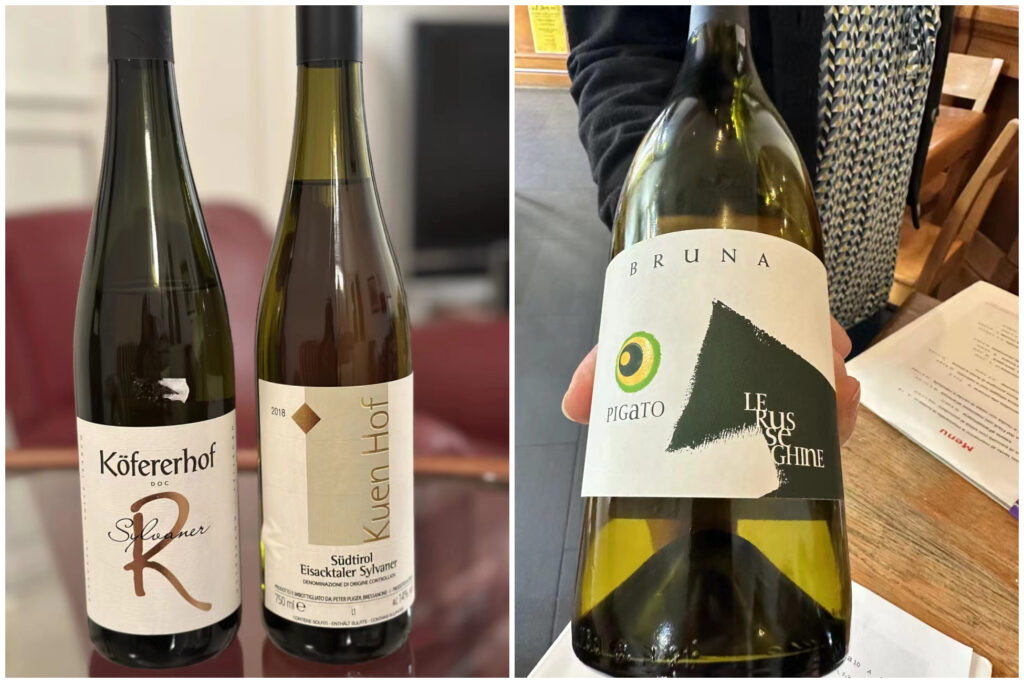
And so it is at the Trimani Wine Bar, where everyone knows your name plus a thing or two about very good food and wines.

 English
English
